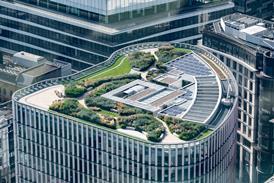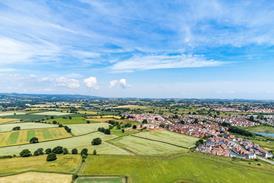However, the taskforce has stopped short of recommending a tax on greenfield development and has instead called on government to impose an environmental-impact fee on all greenfield schemes.
The impact fee would reflect the environmental effect of a greenfield development on an area. It would be based on increases in air pollution caused by additional traffic and new roads, loss of countryside, damage to biodiversity, pressures on water and waste-management systems and increases in energy consumption and greenhouse emissions.
Lord Rogers reiterated his desire to see incentives for developers that build high-density, mixed-use and mixed-tenure schemes where people from different income groups live side-by-side.
“Low-density schemes cause problems, they cannot support public amenities like transport and localised shops. High-density is also far more energy efficient,” he said.
Taskforce deputy chairman and Housing Corporation chief executive Anthony Mayer said: “We want to establish regeneration companies that can borrow outside the Public Sector Borrowing Requirement. We want to use public funds as a pump primer for private investment in designated areas, helped by tax incentives.”
Incentives to invest in the designated urban priority areas would include fast-track planning, accelerated compulsory purchase powers and tax incentives for developers, investors and dwellers.
Taskforce secretary Jon Rouse said it had decided against recommending a greenfield tax because it was felt that it would result in developers raising house prices, rather than forcing them into urban areas.
The report also called for the “de-allocation” of a number of greenfield sites earmarked for development and for all contaminated land to be brought into development use by 2021. The taskforce also recommended the creation of public-private partnerships to invest in targeted urban areas, and the establishment of national public-private investment funds, which it estimated could attract an additional £1bn in private investment for regeneration projects over a three-year period.
The report called for the establishment of urban regeneration companies comprising local authorities, housing associations, local community representatives, landowners and representatives from the newly formed regional development agencies.
The taskforce also called for VAT on refurbishment work to be scrapped, or, failing that, for a 5% rate to be introduced for both new build and refurbishment. It recommended the use of design competitions for urban schemes and more use of demonstration projects.
The taskforce made it clear that local authorities would be the “prime engine” behind urban regeneration, but it also called for a national policy for urban design that local authorities could refer to when considering planning consent for urban schemes.
The taskforce also wants government to commit a minimum of 65% of transport spending to walking, cycling and public transport over the next 10 years.
Among a raft of fiscal measures recommended by the taskforce was a £500m Urban Renaissance Fund, which would make cash available over the next 10 years to local community groups to develop parts of their community that are currently eyesores.
Other fiscal measures for designated areas included:
- deferring corporation tax so a developer will not have to pay it until a development is in use
- state aid to clean up contaminated sites
- lower council tax
- removal of stamp duty
- tax relief on personal insurance for people who live in high-crime urban areas.
The taskforce’s Rouse conceded that the success of the urban renaissance depended on the Treasury. However, he added: “The cost of doing nothing is more than the cost of implementing the proposals. If we invest in our urban areas now, we will save the government money in future in terms of decreased welfare spending and other benefits.”






















